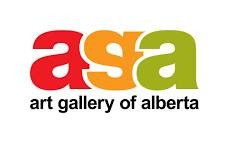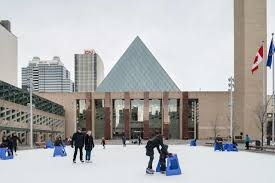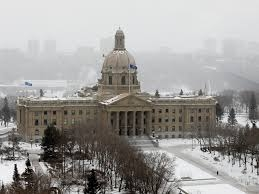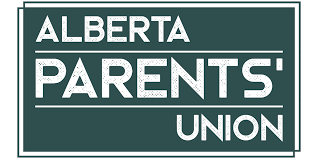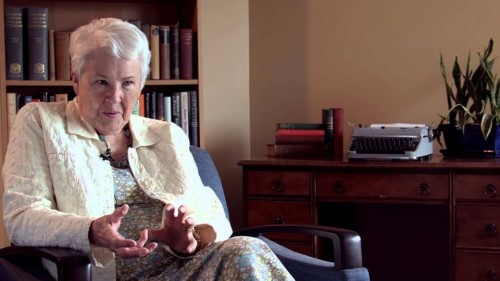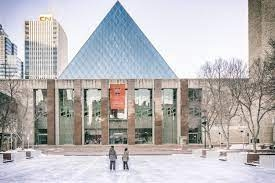What's on in Edmonton this weekend? Celebrate the Winter Solstice with an evening of experimental music featuring Echoradia, Soft Ions ft. Mustafa Rafiq, Jared Epp and and a poetry reading by Caitlin Sian Richards, take in an annual holiday tradition at Canada’s Ukrainian Nutcracker ,enjoy a poignant and powerful musical rendition of Hans Christian Andersen’s classic tale, The Little Match Girl, and so much more!
Demolition of the former Northlands Park Racetrack and Casino has begun. What were winter barns, the Winner’s Circle, the racetrack’s in-field tunnel, the 79th Street barns, and the jockey dorm are all slated for demolition and will clear the way for private developments expected to house some 7,500 residents.
The historical property that is undergoing is approximately 220 acres and is only about 5 kilometers from downtown.
Once the wrecking ball is finished with this undertaking, it can move across 118 Ave and begin demolishing of the Coliseum
I can't say it any plainer.....The Art Gallery of Alberta needs more members & visitors.
I love art, both as a viewer and creator of art. We have children who live in NYC and London, UK. so whenever we go to either city gallery hoping is high up on the priority list. We've been members of AGA for a number of years and visit other galleries/shows periodically throughout the year. Edmonton has a rich creative culture (art/music, theatre, dance, ballet, etc) and we encourage everyone to support the arts. You'll be enriched personally, and the community will benefit greatly!
ON THE AGENDA
Stephanie Swensrude
Before heading into the holiday break, Edmonton city council is scheduled to debate rezoning applications and interview candidates for the Edmonton Police Commission.
A public hearing is scheduled on Dec. 15, a council meeting on Dec. 16 and 17, and an orientation meeting on Dec. 17. Then, aside from a bit of agenda review in the new year, council resumes its regular meeting schedule on Jan. 19.
Here are some key items on the agenda:
- The City of Edmonton has applied to rezone the open space adjacent to the St. Peter Centre at 7330 113 Street NW to allow for a medium-scale residential building. If the application is approved, the city said it plans to sell the land to an affordable housing provider. The site is adjacent to a bus stop and less than 300 metres from the McKernan/Belgravia LRT Station. Some nearby residents said they oppose the application because they want to see the green space retained for soccer. Council is scheduled to debate the application on Dec. 15.
- More than 100 people said they oppose a rezoning application in Crestwood at 14603 95 Avenue NW. Franken Homes has applied to rezone the corner lot from the small-scale residential zone to the small- to medium-scale transition residential zone, which would allow for the building to be 1.5 metres taller and cover 60% of the lot instead of 45%. Those opposed to the rezoning application said the current RS zone is sufficient and that there is too much infill in the neighbourhood. They also raised concerns about parking, traffic, and the neighbourhood’s character. Administration said it supports the application because the location is appropriate for a larger building. Council is scheduled to debate the rezoning application at a public hearing on Dec. 15.
- The Michael Pavone Realty Group has applied to rezone a property in Queen Alexandra at 10541 81 Avenue NW to allow for a six-storey mixed-use building. The rezoning would remove the requirement for the property to have commercial bays facing the street and would allow for ground-floor residential. Council is scheduled to debate the rezoning application at a public hearing on Dec. 15.
- Council is to meet in private on Dec. 16 to interview candidates for the Edmonton Police Commission and Edmonton Regional Airports Authority.
- Council will learn more about safety and security, as well as public engagement, at an orientation meeting on Dec. 17
~~~~~~~~~~~~~~~~~~~~~~~~~~~~~~~~~~~~~~~~~~~~~~~~~~~~~~~~~~~~~~~~~~~
- There will be a City Council meeting on Tuesday at 1:30 pm. There are several Motions Pending to be reviewed. Councillor Clarke plans to move two motions: one requesting a comprehensive analysis of potential City partnerships and sponsorships beyond naming rights, including revenue impacts and policy adjustments, and another analyzing Edmonton’s tax competitiveness compared with other Canadian municipalities, assessing effects on industrial investment, business attraction, and economic growth. Councillor Morgan intends to request a report evaluating the outcomes of the Permanent Enhanced Cleaning program on transit, including timelines and metrics for success. Councillor Stevenson has two motions: one seeking a report on one-time multi-year programs, grants, and initiatives ending with the 2023-2026 budget, and another requesting an update on the Integrated Call Evaluation and Dispatch initiative, detailing how funding from the Community Safety and Well-Being Strategy has supported integrated dispatch.
- Some Councillors are raising concerns that ward budgets haven’t been updated in 13 years, leaving each of the 12 wards with only about $205,000 to engage with residents, compared with Calgary’s $350,000 per ward for 15 wards. Councillor Aaron Paquette noted that inflation, population growth, and evolving technological and equity needs have made the outdated funding insufficient, limiting offices’ ability to communicate with constituents and provide services such as newsletters or accessibility supports. Council has asked Administration to review ward budgets and the Mayor’s Office funding and provide a detailed service package for consideration. In addition to core funding, Councillors requested office furniture and travel budgets for 2026, including attendance at conferences, advocacy days, and government events such as the Calgary Stampede. Total approved furniture costs for the year came to $11,178, with remaining 2025 budget funds potentially carried forward.
- Council has approved $11 million in annual funding for Explore Edmonton, the City’s tourism agency, along with an additional $2.5 million over three years to support a yet-to-be-named major event bid. Council emphasized the economic benefits, with Mayor Andrew Knack noting the city expects to see $29 back for every dollar invested. Explore Edmonton says that tourism has become a major economic driver, with the city hosting over 80,000 overnight visitors during the Oilers’ Stanley Cup run in 2024. The organization also manages the Edmonton Expo Centre, Convention Centre, and major annual events like K-Days and the Canadian Finals Rodeo.
- The City of Edmonton has begun demolishing the historic Northlands Park Racetrack and Casino to make way for a large residential development on the 220-acre Exhibition Lands site. The project will include 3,500 multi-family and rowhouse units, potentially housing up to 7,500 residents, and is part of a broader City plan that also involves a new fan park and eventual redevelopment of the Northlands Coliseum. Positioned just five kilometres from downtown and near the river valley, the area will be a transit-oriented urban village served by two LRT stations. Demolition is scheduled to finish in spring 2026, with construction on residential parcels starting soon after and some units expected by 2027. The development is expected to unfold over the next two decades, with a market-driven approach guiding residential and commercial construction.
- Edmonton commuters and nearby businesses are seeing relief as 104 Avenue between 105 Street and 121 Street has reopened to two lanes in each direction, marking the completion of the 2025 accelerated Valley Line West roadwork plan. The project, which began in mid-April, involved upgrades to six major intersections along the future LRT line and finished on or ahead of schedule. City crews removed barricades and restored full traffic flow, setting permanent turning options for motorists in completed areas. Officials acknowledged the disruption caused by months of construction and thanked the public for their patience. Planning for the 2026 construction season is already underway, and details on next year’s work will be shared once finalized. The Valley Line West LRT itself remains on track for completion in 2028, after which extensive testing will be conducted before opening to passengers.
- The Alberta Teachers’ Association has filed a labour relations complaint and 61 grievances, accusing the Province’s bargaining agent of negotiating in bad faith over its promise to hire 3,000 new teachers. The union says the government failed to clearly disclose its true position during bargaining, particularly whether those teachers would be additional to positions already funded in the 2025 budget. According to the ATA, the government later suggested the hires were not truly “net new,” which the union argues undermines what was agreed to at the bargaining table. ATA President Jason Schilling said the union is seeking clarity and accountability for commitments made to end the teachers’ strike. The government says Bill 2 was intended to get students back in class and that it will respond to the complaint through the legal process. The dispute now centres on whether the promised teachers must be funded and hired on top of existing budgeted staffing plans.
- Canada and Alberta have agreed to a one-year extension of their child-care agreements, keeping average fees at about $15 per day until March 2027. Ottawa will transfer more than $1.17 billion to Alberta in 2026-27 to maintain affordability grants and support licensed operators while longer-term negotiations continue. While parents and providers welcomed the short-term relief, many warned the brief extension creates ongoing uncertainty about future fees, space creation, and workforce participation. Parents say the lack of clarity has heightened stress, especially given rising wait lists and the risk of fees increasing sharply without federal support. Child-care operators echoed those concerns, calling the extension a temporary fix that does not address structural issues, including caps on for-profit spaces and late-stage licensing decisions. Both governments say the extension buys time to negotiate a more durable framework, but families and providers are urging a multi-year deal to restore stability.
- A Legislative Committee has approved an extra $6.7 million for Elections Alberta to manage a surge in recall petitions targeting MLAs, most of them directed at the governing United Conservative Party. The funding follows advice from the Chief Electoral Officer that verifying the 21 petitions issued since late October, along with staffing and mailing costs, far exceeded the agency’s existing budget. Committee members unanimously supported the increase. In a separate decision, the Committee granted Elections Alberta an additional $3 million to prepare for a likely provincial referendum next year. While the funding requests were largely approved, the Committee did not fully meet Elections Alberta’s proposed budget for the next fiscal year.
- The Alberta government amended Bill 14 after the Province’s Chief Electoral Officer warned it could undermine democratic independence and create the perception of partisan influence. Gordon McClure said the bill risked eroding the separation of powers by allowing the Justice Minister to direct the Chief Electoral Officer’s actions. In response, Justice Minister Mickey Amery introduced amendments removing provisions that would have required ministerial approval to block similar referendum questions and eliminating a clause allowing the Minister to refer petition questions to court. The government says the changes restore balance and prevent delays to citizen-led democracy. Opposition leaders argue the amendments fail to address the core concerns and instead weaken oversight by limiting the ability to challenge problematic referendum questions.
- Alberta’s Auditor General, Doug Wylie, has called on the UCP government to improve public performance reporting across the province’s health care system. His report found that Alberta Health Services’ reporting during its final years was inconsistent, low-quality, and often did not follow established guidelines, making it difficult to assess the impact of health system changes. Wylie highlighted delays in producing business plans, unclear performance measures, and a lack of authoritative policies to guide staff. He emphasized that transparent reporting is essential for Albertans to understand whether recent restructuring, including the division of the health portfolio into four departments, is achieving its goals. The report recommends creating a clear provincial reporting framework, updating outdated accountability documents, and ensuring all publicly funded health organizations follow consistent policies and procedures. Alberta Health Services and the Primary and Preventive Health Services Ministry have said they accept the recommendations and are working to address the concerns.
City Council has finalized Edmonton's 2026 budget - and despite months of warnings from residents, they increased the property tax hike beyond what was originally presented.
The originally expected 6.4% increase was bumped up to 6.9%!
The City's total budget has now reached $6 billion, with a $3.93-billion operating budget and a $2.3-billion capital budget.
While inflation and population pressures were cited as drivers of this increase, many of the increases were the result of political decisions rather than unavoidable costs.
Here is where some of your money went:
- Explore Edmonton: $11 million in additional ongoing funding to attract major events
- Bus Cleaning: $2.7 million in ongoing funding to permanently enhance cleaning on buses
- City Operations: $900 million total, covering transit, road plowing, snow clearing, and other essential services.
- Policing: $628 million to fund Edmonton Police Service operations.
- Bus Purchase: $25.2 million to purchase 25 new buses in high-demand areas
Now, the final tax hike of 6.9% might seem high (and it is!), but - believe it or not - it could have been even worse!
Edmonton’s Financial Stabilization Reserve remains below its minimum target, and Councillor Aaron Paquette proposed a dramatic “rip off the Band-Aid” approach of putting $64.5 million toward restoring the Reserve to its minimum this year.
If his motion had passed, the property tax increase for 2026 would have jumped to over 9%!
Paquette argued this would have allowed the city to have much lower tax increases in future years.
But that's like trying to argue it's a good thing if grocery prices go up by 10% today, instead of going up by 10% in a few years' time.
Thankfully, Council rejected the motion.
Unfortunately, Council also rejected basically every proposal to reduce spending and reduce the tax increase.
Councillor Karen Principe proposed reducing corporate expenditures by $4.7 million, scaling back vandalism control efforts to shave off $2.1 million, and using more of the EPCOR dividend to lower the tax hike by $5 million.
In the end, the budget passed 11-2, with Councillors Michael Elliott and Karen Principe opposed.
In the end, the message is simple - City Hall is continuing to raise taxes and spending faster than ever, without regard for whether Edmontonians can afford to pay.
At Common Sense Edmonton, we track Council decisions, expose wasteful spending, and push for responsible budgeting.
It seems like we will have our work cut out for us over the next four years.
What's on in Edmonton this weekend? Take part in a Filipino Parol (Star Lantern) workshop at the Collins Studio Gallery, celebrate the season and the opening of the City Hall skating rink with live music, performances and family-friendly activities at Bright Light Skate Night, treat yourself to a wide variety of music that spans cultures and time at A Very Cosmopolitan Christmas Concert: Around the World, join EPL’s Featured Artist Leila Zolfalipour for Mosaic of Being, an engaging artist talk and hands-on workshop, enjoy a matinee performance of swing era favourites and unique arrangements of modern pop tunes at The Jivin’ Belles Christmas, and so much more!
As 2025 comes to a close, we want to take a moment to look back at everything Alberta parents accomplished this year - and to say thank you.
This year, parents like you reshaped education in Alberta. You pushed for accountability, fought for real school choice, stood up against bureaucratic overreach, and won major victories that will benefit families for years to come.
Every petition signed, email shared, survey completed, donation made, and meeting attended helped build a movement that grew louder, stronger, and more effective every single month.
Below is a month-by-month recap of the year you helped build - and the wins you helped secure.
January: Launching a Year of Accountability
We opened the year by exposing the absurd loophole in the Education Act that required a by-election in a year with a general election already scheduled, after allowing CCSD to go without a needed by-election for two years.
Our campaign - Parents Deserve School Trustee By-elections - put immediate pressure on the system and doubled as a dry run for our trustee survey infrastructure ahead of October’s general elections.
We also brought insights back from the International School Choice and Reform Conference, highlighting how geographical school assignment traps low-income families while strong school choice lifts them up. Our supporters were the first in Alberta to hear about this research.
February: Debunking Myths and Showing How Competition Works
In February, we dismantled several persistent myths about school board accountability. We showed how non-board options - charters, alternative programs, and independent schools - are more responsive to parents than elected boards that often ignore them.
We proved it with the case of Elk Island Public Schools: a school board that suddenly rushed to create a specialized kindergarten program only after a new charter school was announced in the region. Competition works - and we showed Albertans why.
We also continued correcting misinformation about charter schools, especially the ATA’s misleading claims about exclusivity and accountability.
March: A Huge Budget Victory for Families
March brought one of our biggest wins of the year. After we put pressure on them, the government announced the end of the Weighted Moving Average formula - a broken system that delayed funding and punished fast-growing schools.
The new model moves Alberta closer to a money-follows-the-child funding system, something we’ve pushed for relentlessly.
We also fact-checked the ATA’s claims about per-student funding and highlighted how Ottawa was overreaching into provincial education - including federal restrictions hurting First Nations students by limiting school choice options.
April: Teaching the History of School Choice
April marked the 200th birthday of Thomas D’Arcy McGee - Canada’s “Father of School Choice.” This gave us a powerful opportunity to remind Albertans that choice in education isn’t a modern invention; it’s a historic principle meant to protect minority rights.
We pushed for - and achieved! - improvements to Bill 51 to stop school boards from removing elected trustees for political reasons, and we sounded the alarm on federal funding of anti-parent initiatives being pushed into schools without transparency.
May: Pressing Leaders for Answers
When NDP Leader Naheed Nenshi headlined an event for anti-school-choice groups, we immediately challenged him to clarify his position on the rights of parents.
The threat of a teacher strike also emerged, and we dug deep into the mediator’s report to explain why negotiations stalled - and why real competition would help resolve the issue.
Finally, the Province announced consultations on school library content, and we mobilized parents across Alberta to make their voices heard.
June: Parents Overwhelmingly Reject Explicit Materials
June was a month of media battles, survey releases, and more evidence that parents’ concerns were justified.
The government released data from the library consultation, and it confirmed what we had been saying: parents strongly oppose sexually explicit material in school libraries, and parents overwhelmingly support setting reasonable age-appropriateness standards.
Librarians strongly disagreed - and that contrast helped illustrate why a one-size-fits-all school system simply cannot respond to all families.
With a teacher strike looming, we also proposed an Education Continuity Allowance to let funding follow students if schools closed.
July: Training, Community Work, and a Shocking Case of Abuse
In July, we hosted grassroots activism training and carried our message into neighbourhoods across Calgary. We continued pressing Nenshi for clarity on school choice.
We supported Lethbridge’s annual Stuff the Bus campaign and continued speaking publicly about the need for stronger trustees.
Then came the devastating case of Tirtha Mohanta, a non-verbal autistic boy injured in a CBE school. When the CBE’s internal review dismissed the seriousness of what happened, we launched a petition calling for an independent investigation - and thousands of parents joined us.
August: When School Boards Fail, Parents Step Up
August made one thing clear: school boards were falling behind parents’ expectations.
Boards refused to pilot curriculum, avoided addressing cellphone misuse, and allowed central office budgets to grow while classroom resources shrank.
We explained why school choice is the only real path to accountability.
We also dug into the draft Grade 7-9 Social Studies curriculum, helping parents navigate topics ranging from Indigenous history to free trade to the role of Sir John A. Macdonald.
September: Election Momentum and Another Major Win
Ahead of the school board elections, we organized a focus group to ensure that everyday parents - not activists - were represented in trustee coverage.
And as the threat of a teacher strike grew, we achieved an enormous win: the government adopted our Education Continuity Allowance proposal.
The Parent Payment Program ensured parents would receive $30 per child per day of lost instruction - and that unspent funds would follow students instead of staying locked in school board accounts.
We also continued our push for justice in the Tirtha Mohanta case.
October: Giving Parents the Information They Need
October was the month we delivered on one of the biggest commitments we made when the Alberta Parents’ Union was founded: to give parents the clearest, most comprehensive, and most honest information about school board trustee candidates anywhere in Alberta.
This wasn’t a small task - it was a massive undertaking that took hundreds of hours of work from our team.
We surveyed candidates across every school division, analyzed their responses, verified details, organized data, and published it all in a format parents could use quickly and confidently. Every email we sent, every phone call made, and every follow-up reminder to candidates was part of the promise we made on day one:
If parents were expected to vote, we would make sure they had the tools they needed to make an informed choice.
And not only did we keep that promise - but we had more trustee respondents and a more user-friendly page than the ATA!
Our 2025 School Trustee Candidate Survey became the single most detailed, accessible trustee guide available anywhere in Alberta. Thousands of parents used it before heading to the polls. Dozens of candidates told us they were asked about it at the doors. And for the first time, many parents felt they were finally choosing between real ideas - not just names on a ballot.
When Election Day arrived on October 20th, we reminded parents how powerful their vote is in low-turnout elections.
November: Celebrating 30 Years of Charter Success
In November, we published the results of school board elections across Alberta.
Later in the month, we celebrated 30 years of charter schools - and we used the anniversary to highlight a study showing charter students outperform geographically assigned public school students by more than 9 points on Provincial Achievement Tests.
We also continued correcting misinformation about charter enrollment and admissions.
December: Continuing the Work
December may be the final month of the year, but for the Alberta Parents’ Union, it’s never a slow one. While many organizations wind down, we used December to accelerate - reviewing the year’s victories, identifying gaps that still need to be filled, and laying the groundwork for our biggest year yet.
Behind the scenes, our team has been building new research projects, planning next year’s campaigns, strengthening our election-year infrastructure, and preparing the policy, communications, and grassroots strategies we’ll need to keep pushing Alberta toward true school choice and real accountability. We’ve also been meeting with parents, educators, and community leaders to map out the priorities that matter most heading into 2026.
We are ending 2025 stronger than we started - and preparing for an even bigger 2026.
Thank You for Making This Possible
Every victory this year was powered by parents like you.
Hello Ward Karhiio,
This is the first email newsletter since the Oct. 20th municipal election. I appreciate all the support from the community that got me here for another term as your City Councillor representing Ward Karhiio.
I hope this newsletter can be a place for accurate information about what’s going on in the community and at City Hall, engagement on topics important to you, and to hear some of my perspectives when it comes to decision-making. While we may not always agree on everything, I welcome respectful debate and conversation, and always your experiences and stories.
My role as a City Councillor is to elevate your concerns and turn them into policy actions. While I cannot direct all city operations, Team Karhiio and I can help you navigate the bureaucracy of city government and do our best to achieve outcomes, whether it’s to clear snow on a pathway or widen an arterial road to remove gridlock. No matter the issue, however small or big, resolution comes from collaboration and input from everyone, including you. So I look forward to working with you.
I wish you all a Merry Christmas and Happy Holidays this season, and please take the time to rest, recoup, and connect with family and friends. During the holiday period, our office will be closed from December 22 2025 - January 5 2026. We will see you in the new year!
Stay safe and healthy,
Keren
Keren's update is posted below.
Below is a timely poem by Luci Shaw, one of my favorite poets. Luci Shaw passed on December 1st at the age of 96 and continued to write until her new beginning. In simplicity of words she captured the height, depth, width and breath of Him who is the WORD! Ponder, wonder & Enjoy!
KENOSIS
Luci Shaw
In sleep his infant mouth works in and out.
He is so new, his silk skin has not yet
been roughed by plane and wooden beam
nor, so far, has he had to deal with human doubt.
He is in a dream of nipple found,
of blue-white milk, of curving skin
and, pulsing in his ear, the inner throb
of a warm heart’s repeated sound.
His only memories float from fluid space.
So new he has not pounded nails, hung a door
broken bread, felt rebuff, bent to the lash,
wept for the sad heart of the human race.
On The Agenda
- Councillors are set to learn more about how the City of Edmonton would respond to an emergency situation at an emergency advisory committee meeting on Dec. 12. The committee will be asked to approve the municipal emergency plan, which has been comprehensively updated for the first time since 2021. The new plan includes a preliminary evacuation plan, which is the first step toward a full evacuation plan that’s required due to changes in the provincial Emergency Management Act. It also includes changes that expedite agreements between Edmonton and other municipalities for large-scale evacuations, like those that occurred during the wildfire seasons of 2023 and 2024.
- Councillors have requested $55,500 to attend conferences and other meetings in 2026, according to a report set to be presented to council services committee on Dec. 12. Travel and registration fees are funded by a budget the 12 councillors share, which is $73,000 in 2026. Coun. Keren Tang and Coun. Mike Elliott has each requested to attend the Calgary Stampede in June at a cost of $2,000 and $3,000, respectively. Coun. Jon Morgan has requested to attend three Canadian Urban Transit Association events at a total cost of $13,000. There is $17,500 set aside for all the councillors to attend the Federation of Canadian Municipalities in Edmonton in June.
- Councillors have requested a total of $11,578 for new office furniture, according to a report set to be presented to council services committee on Dec. 12. Office furnishings like workstations and chairs are funded by a budget the 12 councillors share, which is set at the first council services committee meeting of the year. The requests would result in a negative balance of $300, but the report said some requests would be able to be billed to the 2025 fiscal year.
- Administration is scheduled to present the external auditor’s 2025 report to council’s audit committee at a meeting on Dec. 10. The report details KPMG’s plan to audit the consolidated financial statements of the City of Edmonton for 2025.
- Administration will present the proposed boards of directors and budgets for the city’s business improvement areas for 2026 at a council meeting on Dec. 8.
- Council is scheduled to receive a private update on an unspecified event and on a confidential negotiation at a council meeting on Dec. 8.
- Councillors are set to learn more about how the City of Edmonton would respond to an emergency situation at an emergency advisory committee meeting on Dec. 12. The committee will be asked to approve the municipal emergency plan, which has been comprehensively updated for the first time since 2021. The new plan includes a preliminary evacuation plan, which is the first step toward a full evacuation plan that’s required due to changes in the provincial Emergency Management Act. It also includes changes that expedite agreements between Edmonton and other municipalities for large-scale evacuations, like those that occurred during the wildfire seasons of 2023 and 2024.
- Councillors have requested $55,500 to attend conferences and other meetings in 2026, according to a report set to be presented to council services committee on Dec. 12. Travel and registration fees are funded by a budget the 12 councillors share, which is $73,000 in 2026. Coun. Keren Tang and Coun. Mike Elliott has each requested to attend the Calgary Stampede in June at a cost of $2,000 and $3,000, respectively. Coun. Jon Morgan has requested to attend three Canadian Urban Transit Association events at a total cost of $13,000. There is $17,500 set aside for all the councillors to attend the Federation of Canadian Municipalities in Edmonton in June.
- Councillors have requested a total of $11,578 for new office furniture, according to a report set to be presented to council services committee on Dec. 12. Office furnishings like workstations and chairs are funded by a budget the 12 councillors share, which is set at the first council services committee meeting of the year. The requests would result in a negative balance of $300, but the report said some requests would be able to be billed to the 2025 fiscal year.
- Administration is scheduled to present the external auditor’s 2025 report to council’s audit committee at a meeting on Dec. 10. The report details KPMG’s plan to audit the consolidated financial statements of the City of Edmonton for 2025.
- Administration will present the proposed boards of directors and budgets for the city’s business improvement areas for 2026 at a council meeting on Dec. 8.
- Council is scheduled to receive a private update on an unspecified event and on a confidential negotiation at a council meeting on Dec.8.
~~~~~~~~~~~~~~~~~~~~~~~~~~~~~~~~~~~~~~~~~~~~~~~~~~~~~~~~~~~~~~~~~~~~~~~~~~
- Edmonton City Council has approved a 6.9% property tax increase for 2026 following four days of budget deliberations. The budget passed with an 11-2 vote - Councillors Mike Elliott and Karen Principe were opposed. This is higher than the 6.4% increase initially proposed and includes funding for tourism marketing, transit cleaning, new buses, and additional peace officers for traffic safety. Council also approved $7.3 million for road upgrades in west Edmonton in partnership with the provincial government and Enoch Cree Nation, as well as expanded use of the derelict residential tax subclass to encourage property revitalization. The City says the tax increase addresses structural budget variances caused by high costs, rapid population growth, and changing service needs. Tax assessments will be released in January, with notices mailed in May.
- During budget debates, Councillor Aaron Paquette proposed a plan to restore $64.5 million to the City’s financial stabilization reserve, which would have pushed taxes above 9% this year but lowered increases in future years - his motion was defeated 12-1. Funding for Explore Edmonton was approved 8-5, with Councillors Reed Clarke, Thu Parmar, Karen Principe, Michael Elliott, and Mayor Andrew Knack voting against. Councillor Karen Principe also proposed several motions to cut spending and reduce taxes, including reallocating funds from contractual items, vandalism control, and the EPCOR dividend, but all were defeated.
- The Emergency Advisory committee meets on Friday this week to review the City’s updated 2026 Municipal Emergency Plan, a major revision that adds new evacuation planning requirements, updated emergency social services standards, and streamlined procedures aligned with recent provincial legislation. The meeting includes a full briefing on how Edmonton manages prevention, preparedness, response, and recovery efforts during disasters such as wildfires, floods, hazardous materials incidents, and large-scale evacuations. A key spending item is the requested budget increase for the Emergency Management Program, including six additional full-time staff positions costing $927,074 annually to meet new provincial requirements and support emergency readiness. Council members will also receive mandatory training updates required under Alberta’s emergency management regulations.
- The Edmonton Police Service has become the first police agency in the world to test Axon’s new body-worn cameras equipped with facial recognition. Up to 50 officers will use the cameras in a month-long trial to evaluate whether the technology can accurately match faces captured on video with EPS’s existing database, including individuals flagged for safety concerns or with serious outstanding warrants. The system runs in “silent mode,” meaning officers will not receive real-time alerts. Instead, specialized staff will review footage afterward to assess accuracy and operational impact. EPS says all facial-recognition still images will be deleted after testing, with video retained under standard rules. Officials describe the trial as an exploration of whether the technology can enhance public and officer safety, while stressing it will not replace human judgment. Results will be reviewed by the Edmonton Police Commission in 2026, and a Privacy Impact Assessment has been submitted to the provincial commissioner.
- The Alberta government has entered negotiations with the top-ranked bidder to redevelop the former Royal Alberta Museum site in Edmonton’s Glenora neighbourhood. The move follows a shift from last year’s plan to demolish the vacant 1967 building and convert the area into park space. Six proposals were submitted, three met provincial criteria, and one has now advanced to early negotiations. The building currently costs about $700,000 annually to maintain and carries an estimated $225 million in deferred maintenance and renovation needs. Community groups and local MLAs have long urged preservation of the structure, pointing to strong public support in earlier surveys. The Province says more details will be released if negotiations succeed, with the option of approaching the next-ranked proponent if required.



